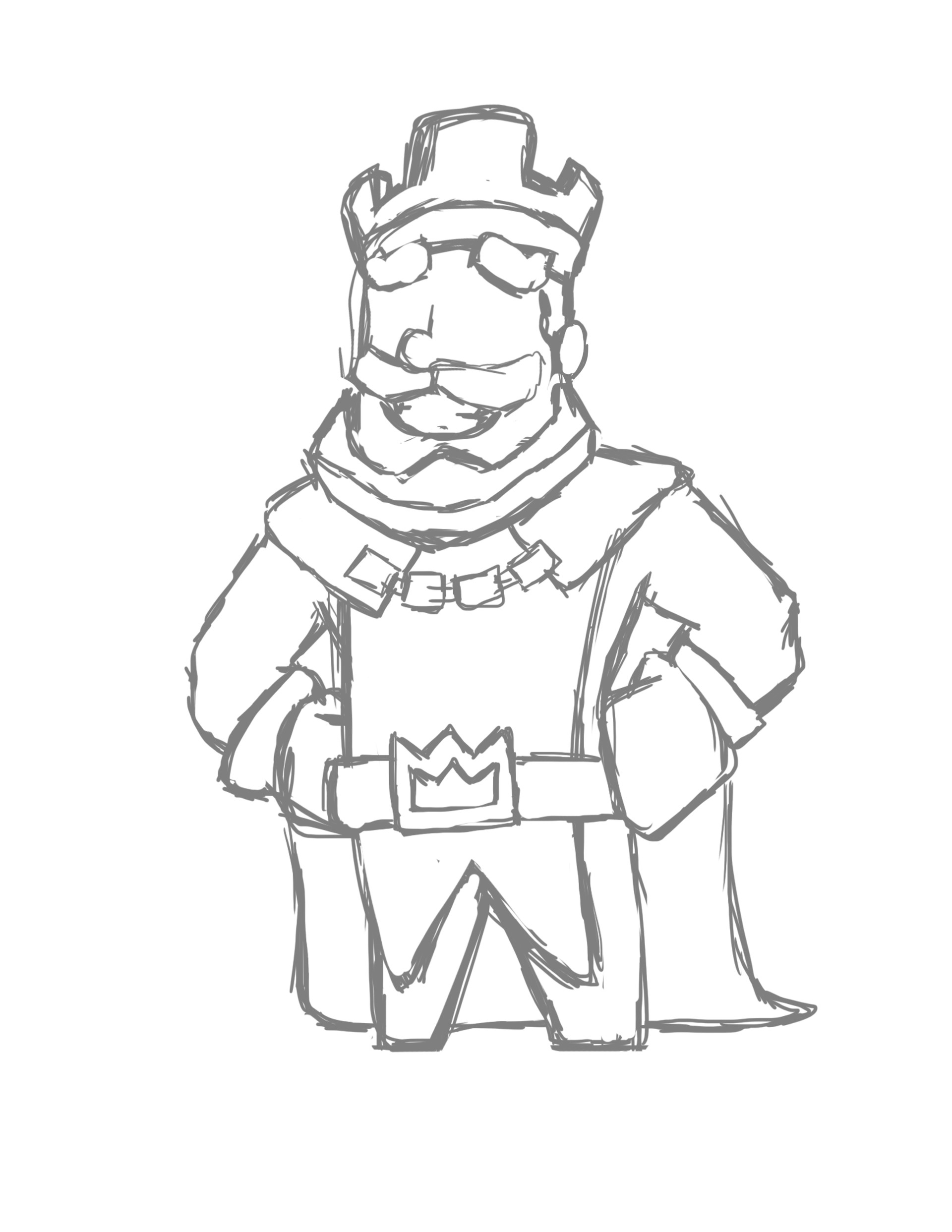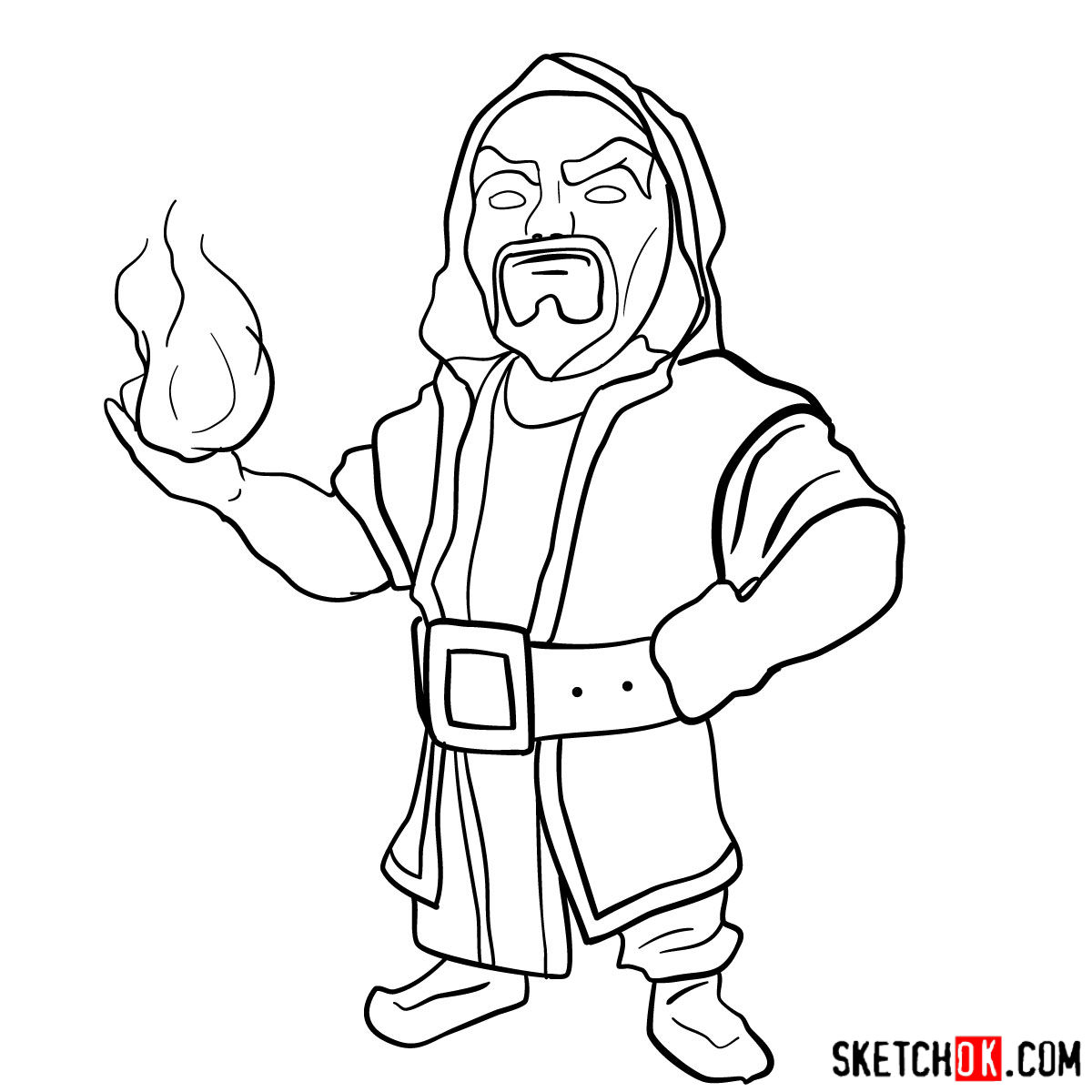Are you struggling to create illustrations that capture the essence of your ideas without feeling overwhelmed? Drawing can be a rewarding yet challenging process, especially when you're trying to replicate complex concepts like "clash like problem drawing easy." Whether you're an aspiring artist or a seasoned illustrator, understanding how to simplify your approach can make all the difference. In this article, we'll explore how to tackle illustration challenges with ease, offering practical tips, creative insights, and actionable steps to help you improve your skills.
For many, the idea of creating a "clash like problem drawing easy" seems daunting. The fear of not being good enough or the pressure to produce perfect results can hinder creativity. However, the key to success lies in breaking down complex ideas into manageable components. By focusing on simplicity and practicing consistently, you can develop a style that is both expressive and effortless. This article will guide you through the process of mastering easy drawing techniques while addressing common challenges artists face.
Whether you're drawing for fun, personal growth, or professional projects, the ability to simplify your approach is invaluable. With the right mindset and tools, you can turn even the most challenging concepts into visually appealing illustrations. Let’s dive into the details of how to achieve this and unlock your full creative potential. By the end of this article, you'll have a clear roadmap to creating "clash like problem drawing easy" with confidence and flair.
Read also:Who Is Devonta Smiths Wife Unveiling The Life Of The Nfl Stars Better Half
Table of Contents
- What Makes Drawing So Difficult for Beginners?
- How Can You Simplify a Clash Like Problem Drawing Easy?
- Why Is Practice Important for Improving Your Skills?
- Essential Tools for Easy Drawing
- Can You Learn to Draw Without Formal Training?
- Step-by-Step Guide to Creating a Clash Like Problem Drawing Easy
- Common Mistakes to Avoid When Drawing
- How to Find Inspiration for Your Illustrations?
- Why Should You Embrace Your Unique Style?
- Frequently Asked Questions About Clash Like Problem Drawing Easy
What Makes Drawing So Difficult for Beginners?
Drawing can feel like an insurmountable challenge for beginners, especially when attempting to create something as intricate as a "clash like problem drawing easy." One of the primary reasons is the overwhelming number of elements to consider, such as proportions, shading, and perspective. These technical aspects can make the process seem intimidating and discourage new artists from continuing.
Another challenge is the lack of confidence in one's abilities. Many beginners compare their work to that of experienced artists, leading to frustration and self-doubt. However, it's important to remember that every artist starts somewhere, and the journey to improvement is gradual. By focusing on small, achievable goals, you can build confidence and gradually enhance your skills.
Finally, the absence of proper guidance can hinder progress. Without a clear understanding of basic techniques and tools, beginners may struggle to develop their style. This is why learning from credible sources and practicing consistently is essential for overcoming these obstacles.
How Can You Simplify a Clash Like Problem Drawing Easy?
Simplifying a "clash like problem drawing easy" begins with breaking down the concept into smaller, more manageable parts. Instead of focusing on the entire illustration at once, concentrate on individual elements such as shapes, lines, and textures. This approach allows you to tackle each component systematically, reducing the overall complexity.
One effective technique is to use basic geometric shapes as the foundation of your drawing. For example, start by sketching circles, squares, and triangles to outline the main elements of your illustration. Once you have a solid framework, you can add details and refine the design. This method not only simplifies the process but also ensures that your drawing remains balanced and proportionate.
Additionally, experimenting with different styles can help you discover what works best for you. Don't be afraid to try new techniques or tools, as this exploration can lead to unexpected breakthroughs. By embracing simplicity and focusing on the essentials, you can create a "clash like problem drawing easy" that is both visually appealing and satisfying to produce.
Read also:Bruno Mars Debt Unveiling The Truth Behind The Financial Buzz
Why Is Practice Important for Improving Your Skills?
Practice is the cornerstone of improvement in any artistic endeavor, including creating a "clash like problem drawing easy." The more you draw, the more familiar you become with the tools and techniques required to bring your ideas to life. Consistent practice also helps you develop muscle memory, making it easier to execute complex strokes and shapes with precision.
Moreover, practice allows you to experiment with different styles and mediums. By trying out various approaches, you can identify what resonates with you and refine your unique artistic voice. This exploration is crucial for growth, as it enables you to push the boundaries of your creativity and discover new possibilities.
Finally, practice builds confidence. As you see improvements in your work, you'll feel more motivated to continue honing your skills. This positive reinforcement creates a cycle of growth, encouraging you to take on more challenging projects and expand your artistic repertoire.
Essential Tools for Easy Drawing
Having the right tools can significantly enhance your drawing experience, especially when working on a "clash like problem drawing easy." Here are some essential tools every artist should consider:
- Pencils: A range of pencils with varying lead hardness (e.g., 2H to 6B) allows you to create different shades and textures.
- Paper: Choose high-quality paper that can withstand erasing and layering without tearing.
- Eraser: A good eraser helps you correct mistakes and refine your work without damaging the paper.
- Blending Tools: Tortillons or blending stumps are useful for creating smooth gradients and transitions.
- Reference Materials: Books, online tutorials, and real-life objects can serve as inspiration and guidance.
Investing in these tools can make the drawing process more enjoyable and efficient, allowing you to focus on creativity rather than technical limitations.
Can You Learn to Draw Without Formal Training?
While formal training can provide valuable insights and techniques, it is not a prerequisite for learning to draw. Many successful artists are self-taught, relying on online resources, books, and personal experimentation to develop their skills. The key to success lies in dedication and a willingness to learn.
One advantage of self-teaching is the freedom to explore your interests and develop a unique style. Without the constraints of a structured curriculum, you can focus on the aspects of drawing that excite you most. This approach fosters creativity and allows you to grow at your own pace.
However, it's important to seek feedback from others to ensure you're on the right track. Joining online art communities or sharing your work with friends and family can provide valuable insights and encouragement. By combining self-guided learning with external input, you can achieve remarkable progress without formal training.
Step-by-Step Guide to Creating a Clash Like Problem Drawing Easy
Creating a "clash like problem drawing easy" doesn't have to be complicated. Follow these steps to simplify the process and achieve impressive results:
- Start with a Concept: Decide what you want to illustrate and gather reference materials to guide your work.
- Sketch Basic Shapes: Use circles, squares, and triangles to outline the main elements of your drawing.
- Refine Your Sketch: Add details and adjust proportions to create a balanced composition.
- Apply Shading and Textures: Use pencils or digital tools to add depth and dimension to your illustration.
- Review and Revise: Step back and evaluate your work, making necessary adjustments to improve clarity and impact.
By following these steps, you can create a "clash like problem drawing easy" that is both visually appealing and satisfying to produce.
Common Mistakes to Avoid When Drawing
Even experienced artists make mistakes, but being aware of common pitfalls can help you avoid them. Here are some errors to watch out for:
- Overworking Details: Adding too many details can make your drawing look cluttered and overwhelming.
- Ignoring Proportions: Failing to maintain proper proportions can result in an unbalanced composition.
- Skipping the Planning Phase: Jumping straight into the final drawing without a rough sketch can lead to errors and frustration.
- Neglecting Lighting and Shadows: Proper shading is essential for creating depth and realism in your illustrations.
By avoiding these mistakes, you can create a "clash like problem drawing easy" that is polished and professional.
How to Find Inspiration for Your Illustrations?
Feeling stuck for ideas is a common challenge, but there are many ways to find inspiration for your "clash like problem drawing easy." Start by observing the world around you—nature, architecture, and everyday objects can spark creative ideas. Additionally, exploring art galleries, books, and online platforms like Pinterest can expose you to new styles and techniques.
Another effective method is to keep a sketchbook where you jot down ideas and doodles. This practice helps you capture fleeting thoughts and develop them into fully realized illustrations. Collaborating with other artists can also provide fresh perspectives and motivate you to push your creative boundaries.
Finally, don't be afraid to experiment and take risks. Sometimes, the most unexpected ideas lead to the most innovative and exciting results. By staying open to inspiration, you can continually evolve as an artist.
Why Should You Embrace Your Unique Style?
Every artist has a unique style that sets their work apart from others. Embracing this individuality is crucial for creating a "clash like problem drawing easy" that reflects your personality and vision. Trying to imitate others may lead to frustration and dissatisfaction, as it prevents you from expressing your true self.
Developing your style takes time and experimentation. Don't be afraid to make mistakes or try unconventional approaches, as these experiences contribute to your growth as an artist. Over time, you'll discover what resonates with you and refine your techniques accordingly.
Ultimately, embracing your unique style allows you to create work that is authentic and meaningful. This authenticity not only enhances your enjoyment of the creative process but also resonates with your audience, making your illustrations more impactful and memorable.
Frequently Asked Questions About Clash Like Problem Drawing Easy
How Long Does It Take to Get Better at Drawing?
The time it takes to improve at drawing varies depending on factors such as dedication, practice frequency, and learning methods. Some artists see noticeable progress within a few months, while others may take years to develop their skills. The key is consistency and patience.
What Are Some Good Resources for Learning to Draw?
There are countless resources available for aspiring artists, including online tutorials, YouTube channels, art books, and workshops. Platforms like Skillshare and Udemy offer structured courses, while communities like DeviantArt provide opportunities to share and receive feedback on your work.
Is Digital Drawing Better Than Traditional Drawing?

